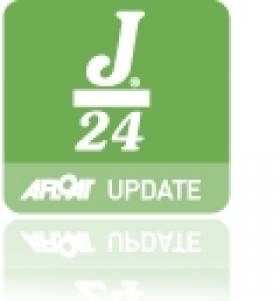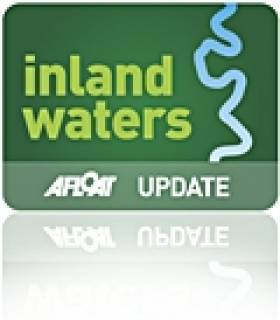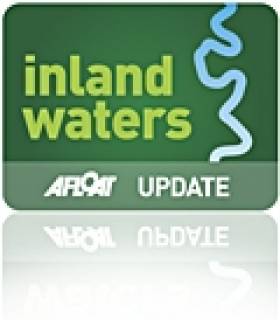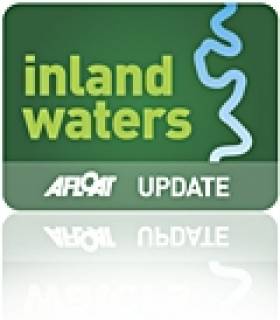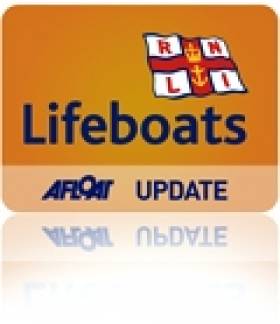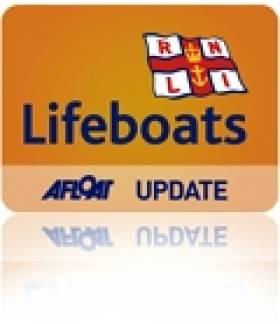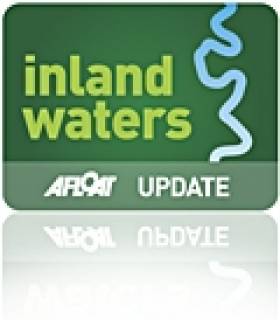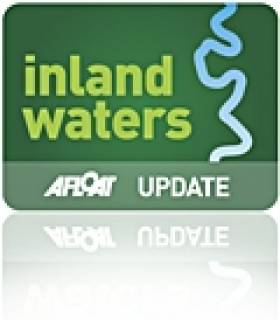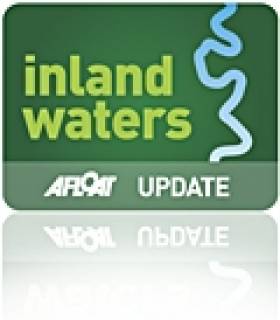Displaying items by tag: Lough Erne
Clean Sweep for Local J24 Keelboat Ace on Lough Erne
Local J24 ace JP McCaldin, sailing Jamais Encore had a clean sweep on the first day of the J24 Northerns in Lough Erne and the no wind conditions on Sunday meant no more races were sailed.
While some boats challenged JP in the different races in the 15 knots that prevailed on Saturday his consistency left little scope for anyone to gain a sufficient advantage.
The next J24 Championship will be in Lough Ree on June 22nd.
1st Jamais Encore J24 5278 LEYC JP McCaldin 1 1 1 1 4 4
2nd Stouche J24 4215 Howth Martin Darrer 2 2 4 4 12 12
3rd Hard On Port J24 4794 Howth Flor O'Driscoll 4 4 2 5 15 15
4th Kilcullen J24 680 Howth Cillian Dickson 3 3 10.0 DSQ 2 18 18
5th JET J24 418 Lough Swilley John Hasson 10.0 DNS 6 3 3 22 22
6th Jelignite J24 4218 Lough Ree Finbarr Ryan 5 5 5 10.0 DSQ 25 25
7th Juvenesence J24 144 LEYC Brendan Gallagher 8 7 6 6 27 27
8th Jeratrix J24 24 LEYC Michael Clarke 6 8 7 8 29 29
9th T J J24 4155 LEYC Barry Humphreys 7 9 8 7 31 31
#InlandWaterways - Waterways Ireland has advised all masters and users of the Erne system that the channel east of Castle Island near Enniskillen will be closed till Tuesday 11 June to facilitate a number of events on the water.
Mariners are directed to follow the marked navigation channel and signs to the west of Castle Island and proceed at a slow speed and with minimum wash. They should note any advise or instructions given by event organisers when in this section of the navigation.
Public jetties in the vicinity will remain accessible throughout, though some minor restrictions may be in place as and when required. Further information is available from the Lough Erne warden at 028 6632 3004.
Elsewhere, there will also be restricted mooring for masters and owners on the River Shannon at Carrick-on-Shannon to facilitate spectator viewing of the Carrick 400 event.
On Sunday 2 June the quay wall from the downstream face of the town bridge to the floating moorings will be out of bounds for mooring from 7pm till midnight.
In other waterways news, recent water quality testing has shown the harbour at Kilcock on the Royal Canal to now be within normal bathing water standards.
NI Minister Greenlights Ulster Canal Restoration
#InlandWaterways - NI Environment Minister Alex Attwood has finally announced planning permission to restore part of the historic Ulster Canal that has not been used since 1929.
The original Ulster Canal was completed in 1841 and linked the Erne System to Lough Neagh with a 93km navigation route. It was last used for trading boats in 1929 and officially closed two years later.
The application is to restore 14km of the navigational route in total - 5.5km or river navigation from Quivvy Lough to Gortnacarrow and 8.5km of canal from Gortnacarrow to Clones.
This will involve construction of the existing canal route and tow paths for public access on both banks. New road bridges are to be constructed at Derrykerrib, Wattle Bridge, Gortnacarrow and Clonfad/Munilly with three farm accommodation bridges.
The plan is to restore two existing canal bridges and a double lock at Gortnacarrow that will facilitate a rise from the River Finn to the canal section. A mooring of 170m with 32 car parking spaces and public toilets will be provided at Gortnacarrow. A picnic area and a further 20 parking spaces will be provided at the new bridge at Clonfad/Munilly.
Minister Attwood said: “The Ulster Canal restoration project has been a key heritage and tourist attraction for a long time, which has gathered momentum since the late 90s. Today is a turning point for the project. I hope the Planners’ green light means the project can accelerate.
“This is an example of cross-border initiatives working and working well. It follows from my announcement to give planning permission to the bridge at Narrow Water, linking Warrenpoint and Omeath.
“This cross-border project will be a boost for the people of Fermanagh, Cavan and Monaghan. It will re-open a historic waterway that has not been used for over 80 years and offers huge opportunities for regeneration and leisure-related activities for the entire region.”
Four accompanying applications for Listed Building Consent to carry out works to repair and restore three listed bridges and works to the Clones Aqueduct have also been approved.
Northern Ireland's Department of the Environment consulted Fermanagh District Council on its opinion to approve this application on 18 April 2013.
Monaghan County Council and Clones Town Council have signalled that planning approval should be granted for the Repubic side of the canal - although moves have been slow on that front.
Despite confirmation from Minister for Arts, Heritage and the Gaeltacht Jimmy Deenihan in April 2012 that the "main thrust" of waterways refurbishment is still focused on the reopening of the Ulster Canal, no significant moves have been made in the year since that statement, which came some months after a U-turn in Government funding for such projects.
PSNI Announces G8 Marine Plan for Lough Erne
As part of Waterways Ireland role in preparing to deliver a safe G8 event for everyone, planning has been taking place to police Lough Erne.
This will involve implementing a marine plan, the aim of which is to deliver a safe and secure G8 while minimising disruption to users of the Lough.
A significant police operation will be in place in the lead up to and during the G8 Summit on 17th and 18th June.
Meeting the ongoing needs of our community has been a key consideration and we have been working to reduce any potential inconvenience caused to users of Lough Erne.
There will be a closure of Lower Lough Erne from the Lock Gates at Portora to an area north of the Venue adjacent to Ross Point. During the closure, no form of boat or vessel movement will be permitted within the closure zone, however shoreline activity such as land based fishing will be permitted. There will be stand off markers in place in advance of each closure.
These are to help safeguard lough users and to protect them from damage or injury. It is important they everyone using the lough heeds these safety markers Please be assured that every effort will be made to keep this closure as short as possible. It is currently planned that it will commence at lunch time on Sunday (June 16th) and end on Tuesday night (June 18th).
However this may change a little for operational reasons. Emergencies requiring the deployment of rescue vessels such as the RNLI will be facilitated. Police will be patrolling both closure points and will help those who need help or further guidance.
Local Police have met with local groups to discuss the plans and have been working with partner organisations during the planning phase
Lifeboat Roundup: Windsurfers Rescued In Waterford; Boats Aground in Wexford, Lough Erne
#RNLI - The Dunmore East RNLI lifeboat was tasked yesterday (7 April) to assist two windsurfers in difficulty near Duncannon in Waterford Harbour.
In rough conditions yesterday afternoon, with south-east winds force 6/7 blowing, coxswain Pauly Daniels reached the casualties' position within 30 minutes.
By this stage one of the surfers had made it ashore safely at Duncannon. The Dunmore East lifeboat quickly located the other windsurfer a quarter of a mile north of Duncannon. The casualty was safely recovered from the water and landed ashore nearby.
Neither casualty was injured and did not need medical attention.
Nearby in Wexford, five teenagers were rescued from a small speedboat after it suffered engine failure and ran aground on the River Slaney around 1.20pm yesterday.
According to Lorraine Galvin, volunteer press officer at Wexford RNLI, the teens' "fast call for help to the coastguard greatly helped in ensuring their speedy rescue in cold, rough weather conditions".
At the time of the rescue there were wind speeds of force 5 south-easterly and a rough sea state. All of the passengers were starting to suffer from the cold and were treated for mild hypothermia.
Meanwhile, on Upper Lough Erne last Friday the volunteer lifeboat at Enniskillen RNLI (Carrybridge) launched to reports of a vessel that had run aground.
The RNLI lifeboat and rescue water craft were both launched and proceeded to the casualty's last known location 2.5 miles upstream from Carrybridge at Innishmore viaduct.
On route to the scene at the Innishmore viaduct, the volunteer crew got further information that the vessel had managed to refloat and was currently at Killygowan Island.
A full inspection was carried out and none of the crew on the casualty vessel were found to be in need of medical attention.
It was decided with the owner's permission that the volunteer crew would escort their vessel back to Carrybridge with the lifeboat leading and rescue water craft following as the navigation lights were not working.
Enniskillen RNLI Assist Sinking Vessel on Lough Erne
#RNLI - Enniskillen RNLI at Carrybridge was tasked on Tuesday afternoon (2 April) by Belfast Coastguard to reports of a boat taking on water and sinking on Lough Erne.
The lifeboat travelled 4km towards Enniskillen to the last known position of the sinking vessel. On arrival at the scene, the lifeboat crew saw that the occupants of the vessel were on land and that the vessel had been secured to a tree on the bank, though it was still taking on water.
The voluntary crew checked that everyone was present and there were no injuries. Once this was established, the lifeboat crew assessed the casualty vessel and found that the bung was missing.
They located two corks and these were made into a temporary bung. A salvage pump was set up and the water was removed.
The owner of the vessel was contacted and came to the scene. The vessel was judged by the RNLI crew to be capable of making the short distance back to Carrybridge where it was recovered onto a trailer.
'Big Spring Clean' Underway In Fermanagh Waterway
#InlandWaterways - The Belfast Telegraph reports on the annual clean-up of the Glendarragh River in Co Fermanagh by local anglers determined to preserve the quality and natural beauty of their inland waterways resource.
The Kesh and District Angling Club's yearly Big Spring Clean anti-litter drives sees anglers and other volunteers boat along the watercourse to remove as much rubbish and discarded debris as they can find.
As the only waterway in the area where cruisers - many carrying tourists - can travel upstream from Lough Erne, the ugly sight of built-up litter reflects badly on the Fermanagh lakelands, according to club chair Stephen Hey.
"Over the years the water quality has been getting better, but from an aesthetic point of view it's terribly sad to come up the river on a boat and see a rubbish tip." he said, adding that suspected fly-tipping is the cause of much of the waste.
The Belfast Telegraph has more on the story HERE.
Erne Pike Anglers' Misguided Fury Over Commercial Pike Netting
#Angling - Pike anglers in Fermanagh have taken to social media to campaign against what they call the 'illegal' commercial netting of pike in Lough Erne - but the story isn't all what it seems.
According to The Impartial Reporter, the pike nets men are licensed by Northern Ireland's Department of Culture, Arts and Leisure (DCAL) to catch pike during the open season from 1 December to 28 February annually.
A DCAL spokesperson said the commercial fishery is in place "to manage pike stocks and reduce their impact on trout stocks", a practice that is "in keeping with management practices elsewhere, including in high value large trout lakes in the West of Ireland".
It's reported that only five of seven licensed pike nets men took out the necessary permits to net pike on the Erne system in the most recent season.
But this hasn't stopped some anglers from threatening to break the law and tamper with pike nets in what appears to be misguided anger fuelled by online allegations.
The Impartial Reporter has more on the story HERE.
Emergency Exercise on Shannon-Erne Waterway Next Weekend
#InlandWaterways - Waterways Ireland advises all masters of inland vessels and the public that the Emergency Services will conduct a major water-based exercise centred on Upper Lough Erne and the Shannon-Erne Waterway next Saturday 16 February 2013.
The areas of Geaglum, Derryadd, Kilmore, Corradillar and Naan Island in Upper Lough Erne will all be affected between the hours of 10am and 10pm, while Ballyconnell on the Shannon-Erne Waterway will be affected between 2pm and 6pm.
Navigation Restrictions in Enniskillen for Hallowe'en Night Fireworks
#INLAND WATERWAYS - Waterways Ireland is advising all masters and users of the Erne navigation that a fireworks display will take place at Castle Island in Enniskillen on Hallowe'en night around 8pm.
Masters of vessels are advised that in there interest of public safety, there will be no mooring permitted at the Waterways Ireland head office mooring nor at the Henry Street public jetties on the day of the event.
Navigation in the vicinity of Castle Island is also prohibited for the duration of the event.
Alternative mooring is available at the Forum and Regal Pass jetties with easy access to event vantage points. Instructions from safety vessels must be adhered to at all times.
Further information may be had from the Lough Erne manager/warden at the Waterways Ireland head office at +44 48 66 322 836.
Meanwhile, Waterways Ireland also reminds masters and users of the Lower Bann and Shannon waterways that the winter schedule for lock and bridge opening times will take effect from this coming Thursday 1 November, running till Sunday 31 March 2013.
Full details of opening times are available on PDF format for both the Lower Bann Navigation and the Shannon Navigation.


























